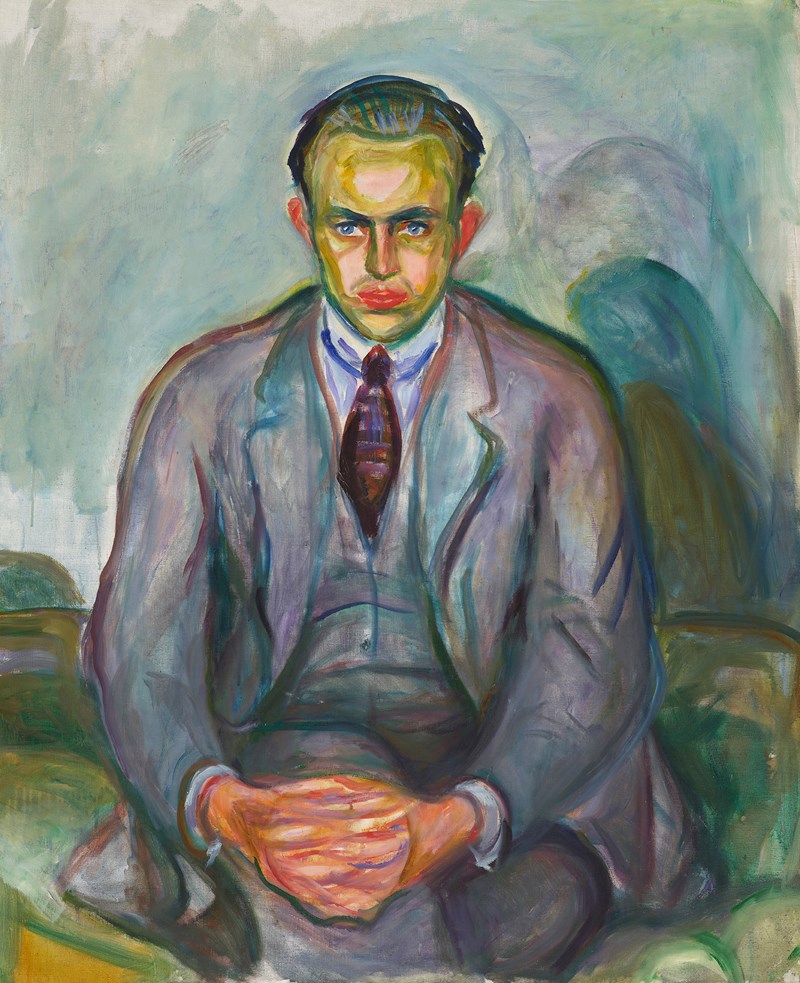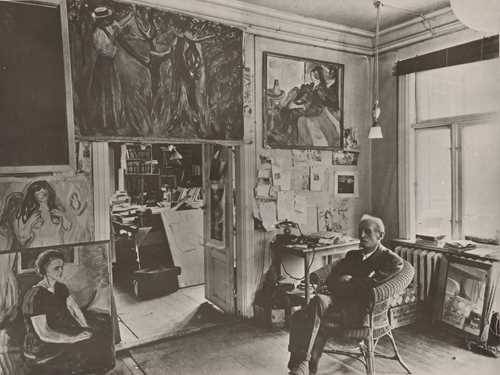The Art Collector Rolf Stenersen
Rolf Stenersen (1899 -1978) was not afraid of what was new or strange.

Edvard Munch: Rolf Stenersen. Oil on canvas, 1925-26. Photo © Munchmuseet
Stenersen was a man of many talents. He was a stockbroker, a sprinter with Olympic participation on the merit list, an author, a newspaper commentator, and a teetotaller. Moreover, he was noticeably interested in art already as a young man, with a nose for finding distinctive works and building up a unique art collection.
But why did his collection turn out the way it did?
Strange and Peculiar
Stenersen’s passion for art emerged already at a young age. He sold his confirmation gifts in order to buy his first painting by Munch. His father is said to have joked with his mother: “Where did Rolf come from? He doesn’t resemble anyone in either of our families.”
Stenersen confirmed this feeling of not being like anyone else and stated that he “always felt different.” Despite feeling different, or maybe exactly because of it, Stenersen continued pursuing his passion.
When he was only just 18 years old, he went to Munch’s house at Ekely and knocked on the door. He had decided to meet Munch personally, despite people telling him not to be too pushy. The door was opened and the meeting that day became the start of what was to be a lasting conversation between the two of them.
Munch – as the experienced, older artist – became an important collaborator for Stenersen, as he started assembling his collection. He gave Stenersen valuable guidance on which artists to invest in. One piece of advice that Stenersen received from Munch was to become especially important for his collection:
“Don’t buy well-known or established artists. Buy what strikes you as new and good, strange and peculiar”.

Modern Times
Munch’s paintings became the basis for the collection, which was formed during a time when artists experimented with form and colour in innovative ways. So, the collection provides us with a unique impression of the development of modern art in Norway during the first half of the 1900s.
Stenersen delved into the writing of authors such as Nietzsche and Joyce, as well as the subject of psychoanalytical theory. He didn’t shy away from controversy and wasn’t scared of writing explicitly and graphically about sexuality. He was interested in masturbation as a liberating force, but his main focus was on our inner lives and how this manifests itself in art. He was hugely inspired by Sigmund Freud’s psychoanalysis and French surrealism during the 1920s.
This interest was also a big factor in deciding which artworks would find their way into his collection. Several of the works show scenes that touch on birth, sexuality, loneliness, illness, guilt, and shame – everything that constitutes our fleeting and mystifying lives on earth.
What is beautiful?
Munch’s advice and Stenersen’s nose resulted in a collection that consists of several of our greatest artists. It presents the opportunity to experience Ludvig Karsten’s colour pallet, Arne Ekeland’s work with its allusions to psychoanalysis, and Weidemann’s masterful interpretations of Norwegian nature. Rolf Nesch came to Norway as a refugee. He wanted to come to the homeland of the painter Munch – and Stenersen supported the artist who today is acknowledge as one of our most important graphic artists.
(article continues under the image gallery)



Stenersen himself stated in interviews that he didn’t approach new art with a “judging attitude”. That people might just want to see pretty things was something he regarded as “a kind of spiritual laziness”:
“They want to see something pretty. And by pretty, they often mean something they’ve seen before” the then 69-year-old Stenersen related in an interview, reflecting on his life as an art collector.
Observe and Experience
Stenersen’s eye for and courage to invest in the truly modern made his art collection unique. Not to mention the lasting impact of Munch, both as an artist and as a friend.
“Visual stimulation has meant so much to me. Everything I know, everything I’ve learned, everything good has come to me through sight. When I see something beautiful, I have an almost religious experience. I’m filled with reverence, gratitude, and joy at being able to observe and experience it.”
He insisted that what was beautiful to him, didn’t necessarily have to be praised as such by others.
“It doesn’t matter to me if others don’t find it beautiful. That just puts me one step ahead.”
- Rolf Stenersen

In 1936, Stenersen gave away his first art collection, which contained artworks of Edvard Munch and younger Norwegian artists, to Oslo Municipality. Thirty-five years later, in 1971, he donated his new collection, this time with modern European art, to the city of Bergen. For the very first time, Stenersen's two unique art collections are exhibited together in It Might be beautiful. The exhibition is on display 14 May - 14 August 2022 at MUNCH, before it travels on to KODE in Bergen.




